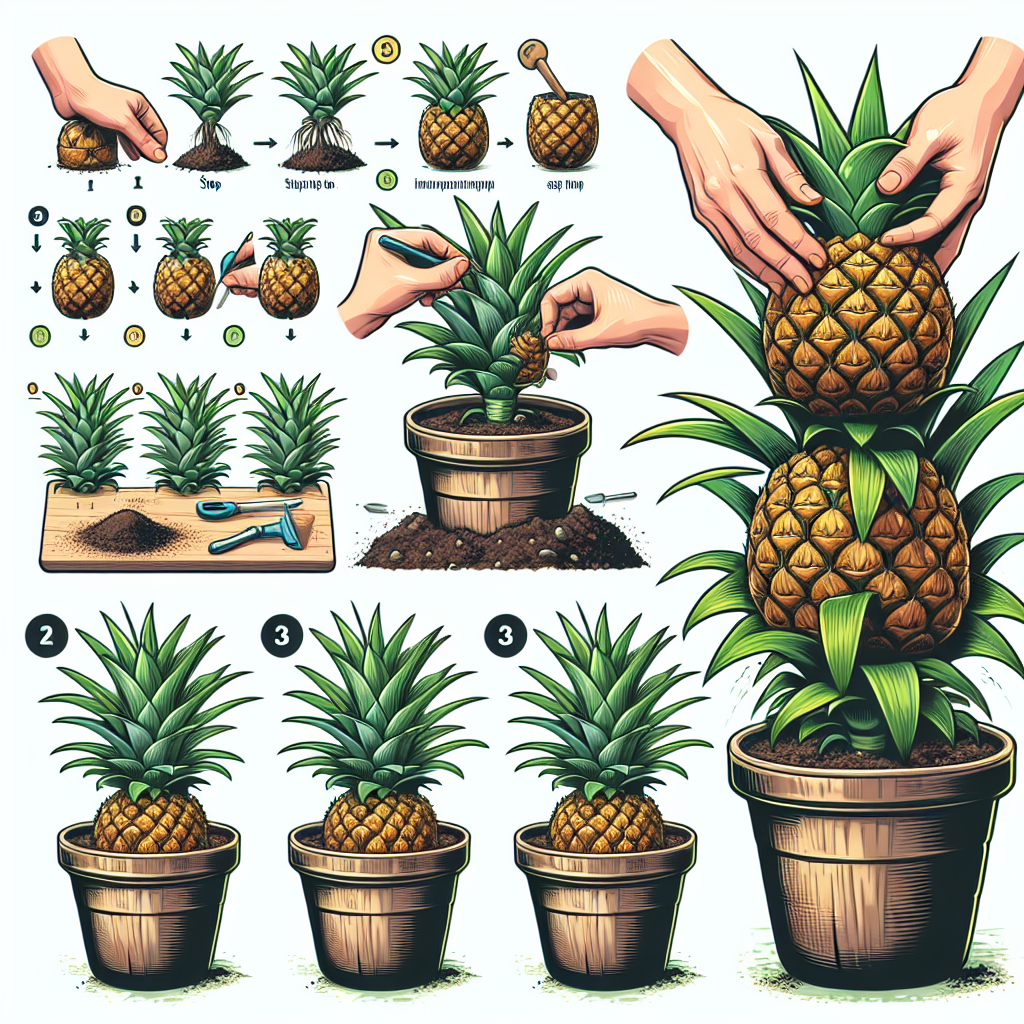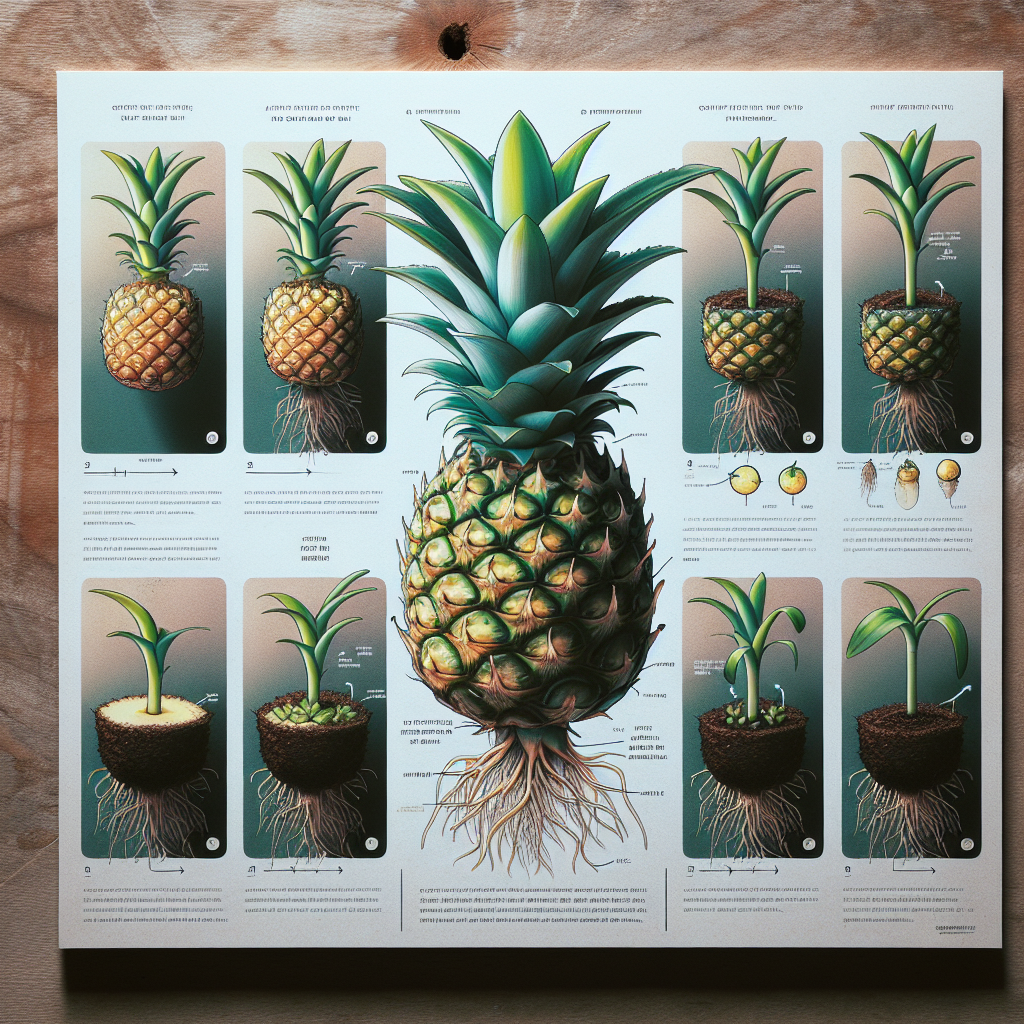Growing Your Own Pineapple at Home: A Guide for Beginners
Pineapples are not only delicious and refreshing fruits, but they also make a stunning addition to any garden or indoor space. Growing your own pineapple at home can be a rewarding and fun experience, and fortunately, it is not as difficult as you might think. In this article, we will provide a comprehensive guide for beginners on how to successfully grow your own pineapple plant at home.
1. Choosing the Right Pineapple Variety:
There are different varieties of pineapples available, but not all of them are suitable for growing indoors or in certain climates. It is important to choose a variety that is well-suited for indoor cultivation and can tolerate the conditions of your particular area. Some popular pineapple varieties ideal for home gardening include ‘Smooth Cayenne,’ ‘Red Spanish,’ and ‘Sugarloaf.’
2. Selecting the Right Planting Method:
There are two primary methods to grow pineapples: from the crown (top) or from suckers (offshoots). Growing from the crown is the most common method and preferred by beginners as it requires less effort.
To grow from the crown, choose a ripe pineapple with healthy green leaves. Cut off the top part of the fruit, ensuring that some flesh is attached to it. Allow the crown to dry for a few days before planting.
3. Preparing the Planting Container:
For indoor cultivation, choose a well-draining pot that is at least 6-8 inches deep. Make sure the container has drainage holes to prevent waterlogging and root rot. A clay or plastic pot with adequate ventilation works best.
Fill the pot with a well-draining soil mix composed of equal parts perlite, peat moss or coconut coir, and regular potting soil. This will provide good drainage while retaining enough moisture.
4. Planting and Caring for Your Pineapple:
Once you have prepared the planting container, it’s time to plant the pineapple crown. Dig a small hole in the soil mix and gently place the crown into it. Fill the hole with soil, leaving the tip of the crown exposed.
Water your pineapple plant thoroughly after planting, ensuring that the soil is evenly moist. Pineapples prefer slightly acidic soil with a pH range of 5.0-6.5. Monitor the moisture level regularly and water when the top inch of soil feels dry.

Place your pineapple plant in a location that receives bright, indirect sunlight for at least 6 hours a day. If growing indoors, a south-facing window or artificial grow lights can provide adequate light. Avoid placing your plant in direct sunlight as it can scorch the leaves.
5. Providing Proper Care and Maintenance:
Pineapples are drought tolerant, but they still require regular watering to thrive. Water deeply once or twice a week, allowing excess water to drain freely from the bottom of the pot.
Fertilize your pineapple plant every two to three months with a balanced liquid fertilizer specifically formulated for fruiting plants. Follow the instructions on the fertilizer packaging for proper application rates.
Keep an eye out for pests such as mealybugs or aphids and take appropriate measures if an infestation occurs. Regularly inspect your plant’s leaves for any signs of discoloration, wilting, or pests.
6. Patience is Key:
It may take anywhere from 18-24 months for your pineapple plant to produce fruit. During this time, your plant will grow larger and develop additional leaves from its center. Avoid disturbing or repotting your pineapple during this period as it may hinder its growth and fruiting process.
7. Harvesting Your Homegrown Pineapple:
When your pineapple begins to turn golden yellow and gives off a sweet aroma, it is ready to be harvested. Gently twist or cut off the fruit from its stem, ensuring that no part of the crown is left attached.
8. Enjoying the Fruits of Your Labor:
Once harvested, your homegrown pineapple can be enjoyed right away. Freshly harvested pineapples are incredibly juicy and full of flavor. You can also use them in various recipes, such as pineapple salsa, smoothies, or grilled pineapple skewers.
In conclusion, growing your own pineapple at home can be a gratifying experience for beginners. By following these steps and providing proper care and attention, you can successfully cultivate your own delicious pineapples right in the comfort of your own backyard or indoor space. So why not give it a try and embark on this journey of tropical fruit cultivation?














